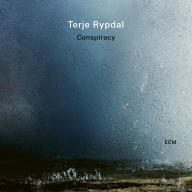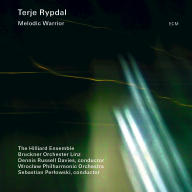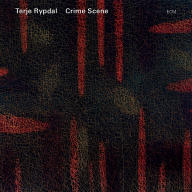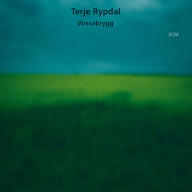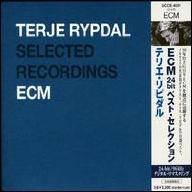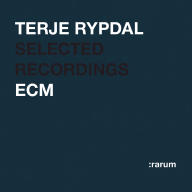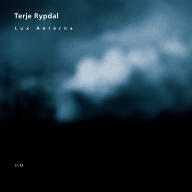Rypdal was born in Oslo in 1947, the son of a conductor and clarinetist for a military band. He had begun his musical studies on the piano by the age of five, and at eight added trumpet. He abandoned both instruments at age 13 for the guitar. On his chosen instrument, Rypdal was self-taught. Between 1962 and 1967 he was part of the Vanguards, a Norwegian instrumental rock group modeled on the Ventures and the British Shadows, but all that changed when he heard Jimi Hendrix for the first time. Rypdal started the psychedelic rock band Dream in late 1967; they recorded their sole album, Get Dreamy, for Polydor in 1968. That same year he formed another band with saxophonist Jan Garbarek and drummer Jon Christensen, and released his first ambitious meld of rock, classical, and jazz with Bleak House for Polydor under his own name.
Rypdal originally attended the Technical University in Trondheim to become an electrical engineer, but left to study musicology at the University of Oslo. He later attended the Music Conservatory in Oslo (later renamed the Norwegian State Academy of Music) from 1970-1972, where he studied with composers Finn Mortensen and George Russell. Rypdal was part of Garbarek's quartet for Afric Pepperbird, the saxophonist's debut for ECM in 1970. He made his debut as a composer with Eternal Circulation in 1971, which was performed by the Garbarek Quartet and the Oslo Philharmonic Orchestra. Rypdal also played with Russell in concert and in the studio, resulting in several offerings including George Russell Presents the Esoteric Circle, and Electric Sonata for Souls Loved by Nature, both issued in 1971. He appeared on Garbarek's sophomore ECM date Sart, and recorded his self-titled debut for the label that same year. Some of his sidemen for the date included Garbarek, bassist Arild Andersen, and pianist Bobo Stenson. This album walked a generous line between free jazz, progressive, psychedelic rock, and more avant-garde classical music. It established Rypdal as a composer and guitarist throughout Europe.
In 1972, he appeared on the live, star-studded session that was released as Morning Glory in 1973 on Antilles; the other players included John Surman, John Marshall, Chris Laurence, John Taylor, and Malcolm Griffiths. In 1973, Rypdal recorded with Russell again; the ensuing offering was entitled Listen to the Silence. He also composed Concerto for Violbasso and Orchestra for Barre Phillips. He released two of his own albums for ECM in 1974, Whenever I Seem to Be Far Away and What Comes After.
The year 1975 proved monumental for Rypdal. His Symphony No. 1 was commissioned by Norwegian Television, and he released the widely acclaimed double-album Odyssey, which was regarded as the pinnacle of jazz-rock fusion. The Odyssey Band toured the globe and was especially successful in the U.S.A. In 1976, Rypdal did a turnabout, and released the musically impressionistic After the Rain, on which he performed all instruments. He also recorded with Russell but went back to his ensemble work with 1978's Waves. Rypdal finished the '70s with a trio date, co-billed with collaborators bassist Miroslav Vitous and drummer Jack DeJohnette.
He commenced the new decade with Descendre, a trio session with Christensen and trumpeter Palle Mikkelborg. Rypdal played keyboards and flute in addition to guitar. To Be Continued, the second album with Vitous and DeJohnette, appeared in 1981. After touring and an extended break during which he worked on his classical composing, Rypdal emerged with his first duet album for ECM, the vanguard classical, electro-acoustic work Eos in 1984. The guitarist returned to a trio format for The Chaser and Blue in 1985 and 1986, respectively. The latter year also saw the release of a 1970 date he and Garbarek had recorded with the George Russell Sextet, A Trip to Prillargui, released on Soul Note. Rypdal also recorded his groundbreaking modern classical work, Undisonus in 1986 (though it wouldn't see release for four more years) and composed two more symphonies. In 1989 he released The Singles Collection, a jazz-rock quartet date that focused on exceedingly brief compositions.
The album Undisonus for Violin and Orchestra/Ineo for Choir and Chamber Orchestra, was finally released in 1990 to massive critical acclaim, and received the "Work of the Year" prize from the Society of Norwegian Composers. It was followed by the long-form work Q.E.D. in 1993, and the jazz-cum-neo-classical fusion set If Mountains Could Sing in 1995. Also that year, Rypdal recorded as a session player with pianist and composer Ketil Bjørnstad's group on The Sea, and as part of Surman's ensemble on Nordic Quartet, both issued on ECM. In 1997, the guitarist issued Skywards, a sextet date that walked the line between formal jazz composition and free improvisation. He finished the decade with Bjørnstad on The Sea II, and a guitar duet recording with Ronni Le Tekrø entitled Tekro II on the Grappa label, both in 1998.
Rypdal began the 21st century busier than ever. In addition to receiving commissions to compose, he was part of Markus Stockhausen's ensemble on Karta, and saw his own Double Concerto/Fifth Symphony issued by ECM. In 2002, his five-movement work, Lux Æterna for soprano, chamber ensemble, organ, trumpet, and guitar, a second album with Tekrø entitled The Radiosong, and his Sonata Op. 73/Nimbus Op. 76 with violinist Birgitte Stærnes, were all released on different labels. In 2006, Vossabrygg, a live sextet date from 2003 inspired by Miles Davis' Bitches Brew group and early Weather Report, was released by ECM. The date also featured an appearance by Rypdal's son Marius on electronics, turntables, and samplers. Life in Leipzig, a duet offering with Bjørnstad, followed in 2008. The large-ensemble tribute to film noir, Crime Scene, appeared in 2010, as did Very Much Alive, a mammoth six-disc concert run by jazz drummer Paolo Vinaccia that featured the guitarist Ståle Storløkken and Mikkelborg. After several festival appearances, the completion of commissions, and some time off, Rypdal returned to recording with 2013's The Melodic Warrior, comprised of two large-scale classical works. The nine-movement title piece, (Op. 79), for electric guitar, chorale, and orchestra, featured the Hilliard Ensemble and Bruckner Orchester Linz, conducted by Dennis Russell Davies and was recorded in their symphony hall. The latter, a four-movement work, And the Sky Was Coloured with Waterfalls and Angels (Op. 97) for electric guitar and symphony orchestra, was performed with the Wroclaw Symphony Orchestra conducted by Sebastian Perlowski and cut live at the Jazztopad Festival in Poland.
After seven years spent composing and guesting on others' ensembles, Rypdal returned to ECM for Conspiracy, his first studio- recorded work in two decades. His band for the date included keyboardist Ståle Storløkken (a member of the guitarist's Vossabrygg, Crime Scene, and Skywards groups), drummer Pål Thowsen, who Rypdal worked with in the '70s and '80s, and bass guitarist Endre Hareide Hallre. Conspiracy was released in September of 2020. ~ Thom Jurek, Rovi


